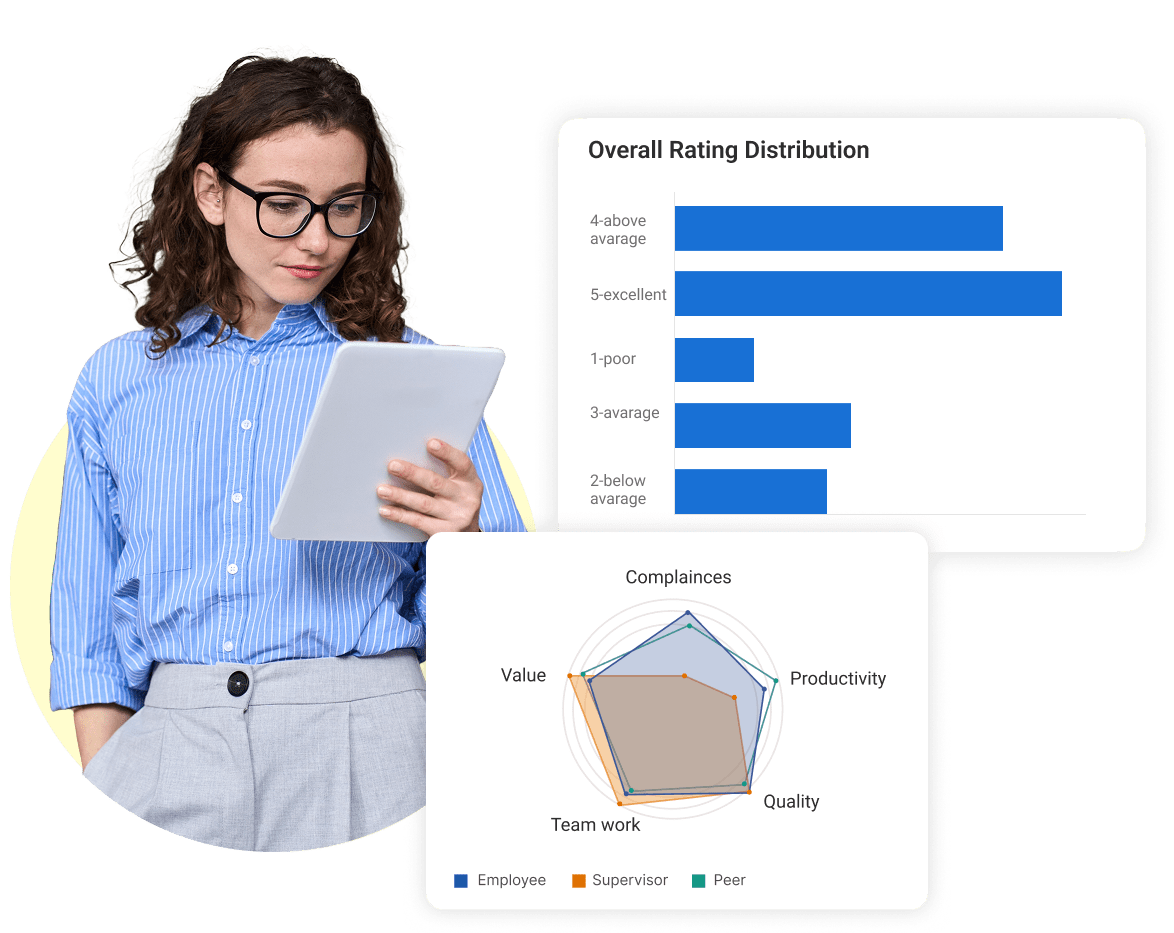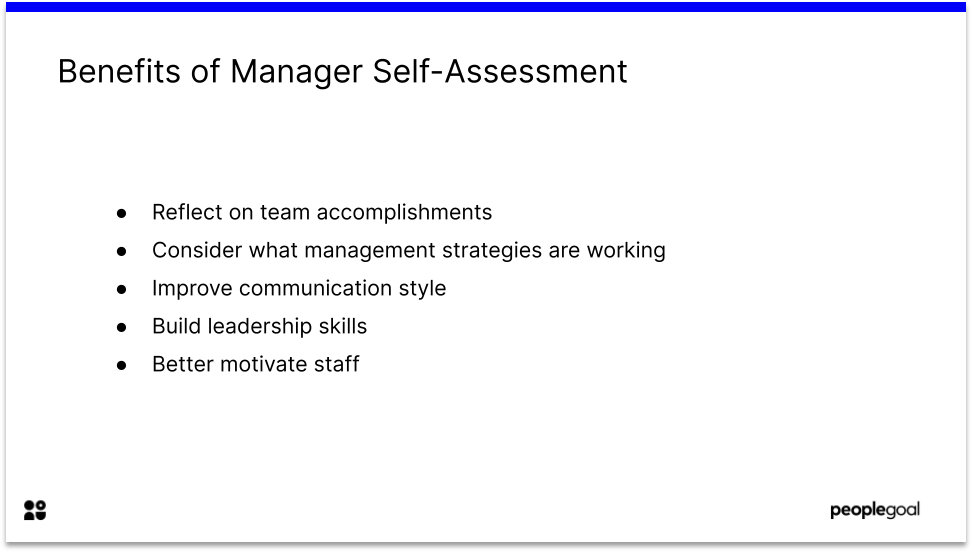In my two decades of experience advising HR leaders and managing high-performing teams, I’ve seen countless businesses struggle with poorly executed performance reviews, focusing too much on past performance rather than future growth.
Actual value comes from making them a two-way conversation that boosts motivation, development, and clarity.
Employee performance reviews are often viewed as dreaded annual events. But, when done right, they can be a powerhouse for both individual success and overall business growth.
According to a Gartner study, companies that abandoned performance review ratings saw a 10% drop in performance. It’s clear that performance reviews are more than just a box to check off; they’re an opportunity to provide feedback, set goals, and align expectations.
In this guide, we’ll dive into what makes performance reviews effective, how to structure them for long-term success, and the best practices you should adopt.
What Is Employee Performance Review?
For those new to the concept, an employee performance review is a formal assessment of an employee’s work performance, typically conducted by their supervisor or manager.
It serves as a structured opportunity to evaluate how well an employee meets the expectations set for them, identify areas for improvement, and discuss professional development opportunities.
For example, a sales manager conducts quarterly performance reviews to assess team members’ lead generation, conversion rates, and client satisfaction scores and provides specific coaching for improvement.
Key Objectives:
For Employers: To align employee performance with company goals, recognize achievements, and identify areas for growth.
For Employees: To receive constructive feedback on performance, set goals for improvement, and gain clarity on their role within the organization.
Let me show a real-life example of how PAVIR transformed painful manual performance processes to employee performance management 2.0:
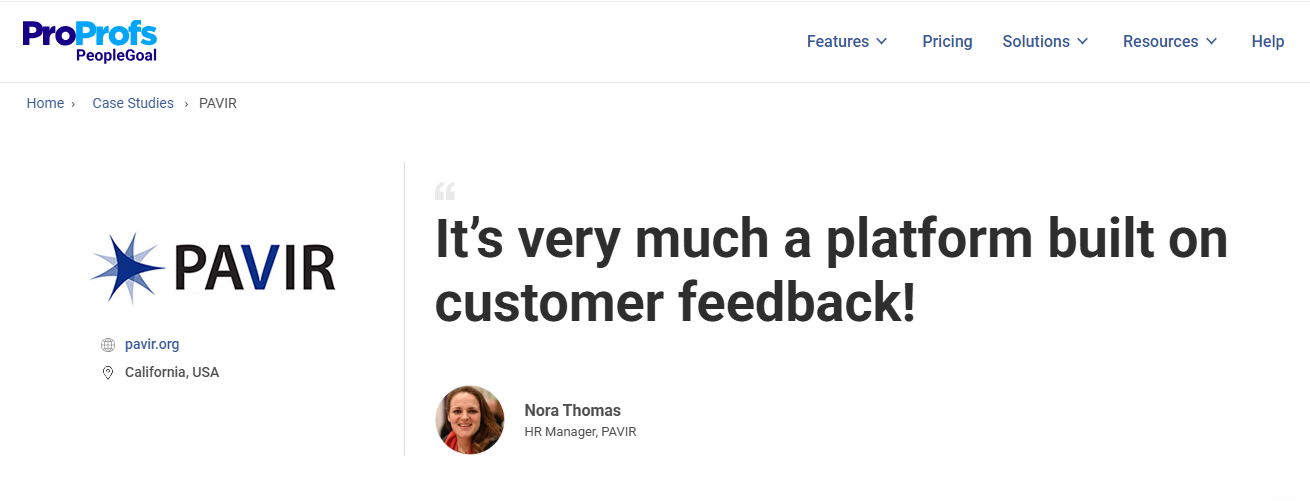
What Is the Importance of Performance Reviews?
Employee performance reviews are a cornerstone of effective talent management. They offer a structured approach to evaluating, developing, and motivating staff, vital for fostering a high-performing and engaged workforce.
Here’s why an employee performance review program is essential:
1. Clarify Expectations & Align Goals
Reviews provide a formal opportunity for managers to communicate clear job responsibilities, performance standards, and expectations.
They ensure that individual employee goals are aligned with team and organizational objectives, helping everyone understand how their work contributes to the company’s overall success. This alignment enhances focus and a shared sense of purpose.
Action Tip:
Set SMART (Specific, Measurable, Achievable, Relevant, Time-bound) goals during each review cycle to provide clear direction and trackable progress for employees.
For example, a manager and employee agree on a goal: “Increase customer satisfaction scores by 10% within the next six months by implementing a new feedback survey and addressing the top three customer complaints.
2. Facilitate Constructive Feedback & Development
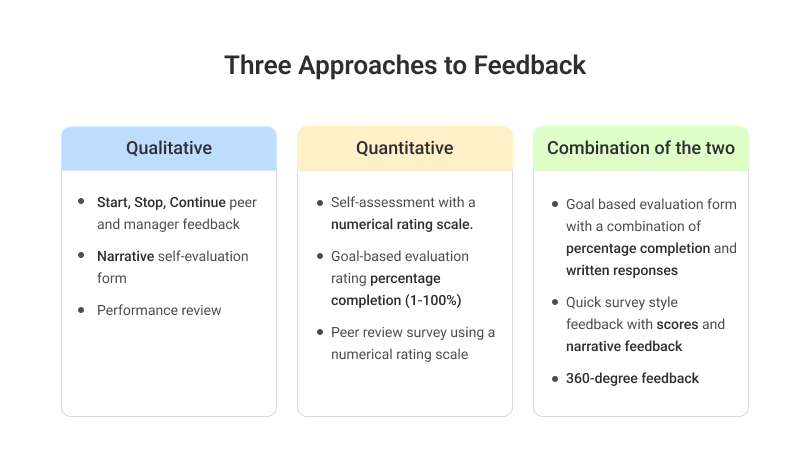
Performance reviews offer a dedicated platform for delivering specific, actionable feedback on an employee’s strengths and areas for improvement.
This feedback is crucial for personal and professional growth, enabling employees to understand where they excel and what skills they need to develop.
It often leads to the creation of tailored development plans, including training and mentorship opportunities.
Action Tip:
Encourage a two-way dialogue by asking employees for their self-assessment and perspective before offering your feedback. This will foster a more collaborative and receptive environment.
For example, before discussing their own observations, a manager asks, “How do you feel about your performance on the recent project, and what were your biggest successes or challenges?”
3. Boost Employee Engagement & Motivation
Recognizing accomplishments and providing positive reinforcement during reviews significantly boosts employee morale and motivation.
When employees feel valued and see that their efforts are acknowledged, their engagement levels increase. This recognition fosters a positive work environment and encourages a continued commitment to high performance.
Action Tip:
Always include specific examples of positive contributions and celebrate achievements, linking them directly to their impact on team goals or company success.
For example, “your initiative in streamlining the reporting process saved the team 5 hours per week, directly contributing to us hitting our quarterly efficiency target. That was excellent work!”
4. Aid in Career Development & Succession Planning
Reviews are instrumental in discussing an employee’s career aspirations and potential growth within the organization.
They help identify high-potential individuals, assess their readiness for more significant roles, and lay the groundwork for succession planning.
This proactive approach ensures a pipeline of talent for future leadership positions and demonstrates the company’s investment in its employees’ long-term careers.
Action Tip:
Co-create a development plan that outlines specific steps, learning opportunities, and resources to help the employee progress towards their stated career aspirations within the company.
For example, an employee aspiring to a leadership role may enroll in a leadership training course and shadow a senior team lead on their next major project as part of their development plan.
5. Inform Strategic Decision-Making
The data collected from performance reviews provides valuable insights for HR and leadership. This information can inform various strategic decisions, including compensation adjustments, promotions, reassignments, and identifying widespread skill gaps across the organization.
Analyzing performance trends helps optimize workforce planning and ensures that talent development initiatives are data-driven and effective.
Action Tip:
Aggregate performance review data to identify company-wide skill gaps or training needs, allowing you to make informed decisions about future learning and development investments.
For example, after reviewing all team performance data, HR identifies a common need for advanced data.
Use this checklist to ensure your performance review meetings are productive, fair, and goal-oriented:
What Are the Key Elements of a Performance Review?
A performance review should consist of specific, measurable, and actionable elements to ensure it is comprehensive and beneficial for both employees and employers.
These elements will help provide structure to your reviews and ensure consistency in feedback.
1. Performance Against Goals & Objectives
This element assesses how well an employee has met their pre-established goals and objectives from the previous review period.
It involves reviewing quantitative metrics (e.g., sales figures and project completion rates) and qualitative achievements (e.g., successful collaborations and improved processes).
Action Tip:
Use a shared goal-tracking system throughout the year to consistently monitor progress, making the review discussion a summary of ongoing performance rather than a surprise.
2. Core Competencies & Skills Assessment
This section evaluates the employee’s proficiency in key skills and competencies relevant to their role and the organization’s values.
This can include job-specific technical skills, communication, teamwork, problem-solving, adaptability, and leadership qualities.
Action Tip:
Provide specific examples or instances that illustrate the employee’s behavior related to each competency, grounding your feedback in observable actions rather than vague statements.
For example:
- Vague Statement: “Needs to improve communication.”
- Clear Statement: “During the last team meeting, you effectively summarized complex project updates, ensuring everyone understood the next steps, which is a great example of clear communication.”
3. Strengths & Achievements
Highlighting an employee’s strengths and accomplishments is crucial for positive reinforcement and motivation.
This involves recognizing successful projects, exceptional contributions, initiatives, and positive impacts on the team or company.
Action Tip:
Begin the review by discussing strengths and accomplishments, creating a positive and appreciative tone before moving to areas for development.
4. Areas for Development & Improvement
This component identifies specific areas where the employee can grow and improve their performance or skills.
It’s essential to frame these as opportunities for development rather than criticisms, focusing on behaviors and outcomes that can be enhanced.
Action Tip:
For each area of improvement, collaborate with the employee to define actionable steps, necessary resources (e.g., training, mentorship), and a realistic timeline for progress.
5. Future Goals & Career Development
This forward-looking element involves setting new goals for the upcoming period and discussing the employee’s long-term career aspirations.
It connects their individual development with potential opportunities within the company, supporting their growth trajectory.
Action Tip:
Work with the employee to create a personal development plan that links directly to their career goals, outlining specific learning objectives and potential career paths within the organization.
6. Employee Self-Assessment
Many effective performance review structures include a self-assessment component, where employees reflect on their own performance, achievements, and development areas prior to the formal review discussion.
Action Tip:
Encourage employees to complete a thoughtful self-assessment before the meeting; this will promote introspection and ensure they feel heard and actively involved in the process.
7. Overall Performance Rating & Summary
A final performance review rating or overall summary provides a concise overview of the employee’s performance during the review period.
This helps standardize evaluations and offers a clear snapshot of their standing.
Action Tip:
To maintain transparency and fairness, ensure the overall rating aligns with the detailed feedback provided and clearly explains the reasoning behind the summary.
What Are the Types of Performance Reviews?
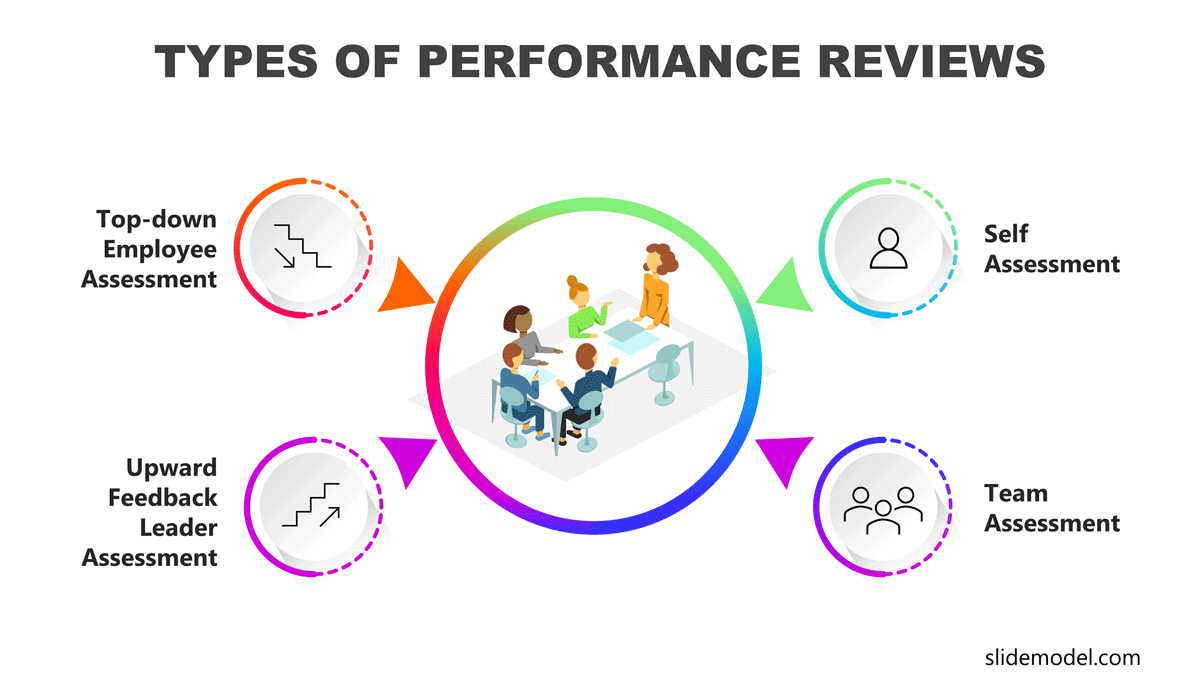
Source: Slidemodel
Performance reviews come in various forms, each designed to offer different perspectives and serve specific organizational goals.
The choice of review type often depends on a company’s culture, size, and the specific objectives of the evaluation.
Here are some common types of performance reviews:
1. Manager-Led Reviews (Traditional)
This is the most common type, in which an employee’s direct manager assesses their performance over a specific period (e.g., annually or biannually). The manager provides feedback, evaluates achievements against goals, and discusses areas for development.
Focus: Top-down feedback, accountability, goal achievement.
2. Self-Assessments/Self-Appraisals
Employees evaluate their own performance, strengths, weaknesses, and contributions.
This performance appraisal process encourages self-reflection and ownership of development, and allows employees to share their perspectives before the manager’s review.
Focus: Employee introspection, ownership, and reparation for discussion.
3. Peer Reviews
Feedback is gathered from colleagues who work closely with the employee. This offers insights into teamwork, collaboration, communication, and interpersonal skills, providing a well-rounded view often unseen by direct managers.
Focus: Team dynamics, collaboration, horizontal feedback.
4. 360-Degree Feedback
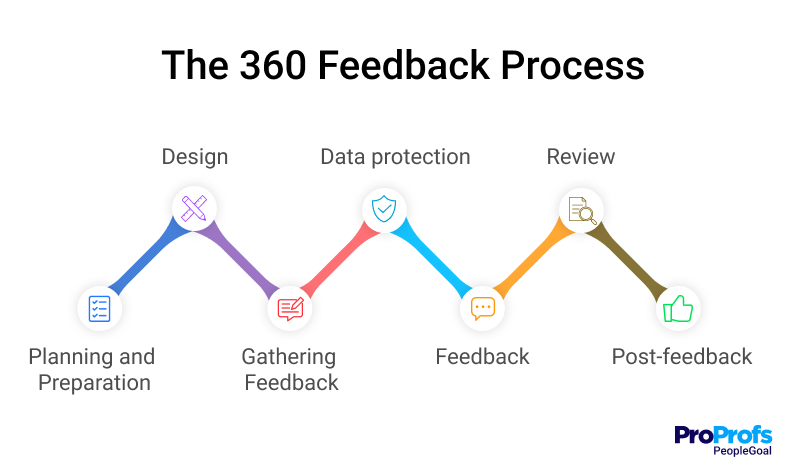
The 360 feedback method for collecting reviews includes the employee’s manager, peers, direct reports (subordinates), and sometimes even external stakeholders like clients or customers.
It provides a holistic view of an employee’s performance and behavior from all angles.
Focus: Holistic development, blind spot identification, multi-source perspective.
5. Continuous Performance Management
This approach emphasizes ongoing, real-time feedback and regular check-ins between managers and employees instead of infrequent, formal reviews.
It’s less about a single “event” and more about a continuous dialogue focused on immediate adjustments and development.
Focus: Real-time feedback, agile adjustments, ongoing development.
6. Objective-Based Reviews (Management by Objectives – MBO)
This method focuses on evaluating an employee’s performance based on their achievement of pre-defined, measurable objectives (SMART goals) that were collaboratively set with their manager at the beginning of the review period.
Focus: Goal attainment, results-driven performance, clear targets.
7. Graphic Rating Scales
Employees are rated on a fixed scale (e.g., 1-5, 1-10) against various traits or behaviors such as punctuality, quality of work, or teamwork.
This method provides quantitative data for easy comparison, but can sometimes be subjective.
Focus: Quantifiable evaluation, standardized assessment of traits.
8. Behaviorally Anchored Rating Scales (BARS)
An advanced form of rating scales, BARS uses specific behavioral examples to define each rating level for a particular job dimension.
This reduces subjectivity by clearly illustrating what constitutes excellent, average, or poor performance.
Focus: Objective behavioral assessment, clear performance examples.
What Are the Best Practices for Conducting Performance Reviews?
Conducting effective performance reviews is essential for employee development and organizational success.
While the specific approach may vary, several best practices can ensure these conversations are productive, fair, and motivating.
1. Set Clear, Measurable Goals
Before the review period, establish clear, specific, measurable, achievable, relevant, and time-bound (SMART) goals with each employee. These goals should align with broader team and organizational objectives.
2. Gather Comprehensive Data
Collect information from various sources to get a holistic view of performance. This includes the employee’s self-assessment, manager observations, peer feedback, and, where appropriate, input from direct reports or clients (360-degree feedback).
3. Focus on Development, Not Just Evaluation
Shift the primary focus from merely judging past performance to fostering future growth. Use the review as an opportunity to discuss career aspirations, identify skill gaps, and create a concrete development plan.
4. Provide Specific, Actionable Feedback
Feedback should be detailed and linked to observable behaviors and their impact. Avoid vague statements. Clearly articulate what went well, what could be improved, and how.
For example: “During the Q3 project (Situation), your initiative to create a detailed communication plan (Behavior) significantly reduced client questions and kept everyone informed (Impact).”
5. Foster Two-Way Dialogue
A performance review should be a collaborative conversation, not a monologue. Encourage employees to share their perspectives, ask questions, and offer their own suggestions for improvement and growth.
6. Maintain Objectivity & Minimize Bias
Strive for fairness by using consistent evaluation criteria across all employees. Be aware of common biases (e.g., recency bias, halo effect) and base feedback on documented evidence rather than personal opinions or recent events.
7. Document & Follow Up
Thoroughly document the discussion, agreed-upon goals, and development plans. The review process doesn’t end with the meeting; schedule follow-up check-ins to monitor progress, provide ongoing support, and celebrate milestones.
How to Set Up Performance Reviews
Setting up performance reviews using dedicated software can streamline the entire process, making it more efficient, objective, and impactful for both HR and employees.
I do it using the PeopleGoal performance management platform this way:
1. Install the Reviews App Template
- Go to your PeopleGoal dashboard.
- Click “Create a new app” and browse the store templates.
- Add the desired review app to your account and select the workspace.
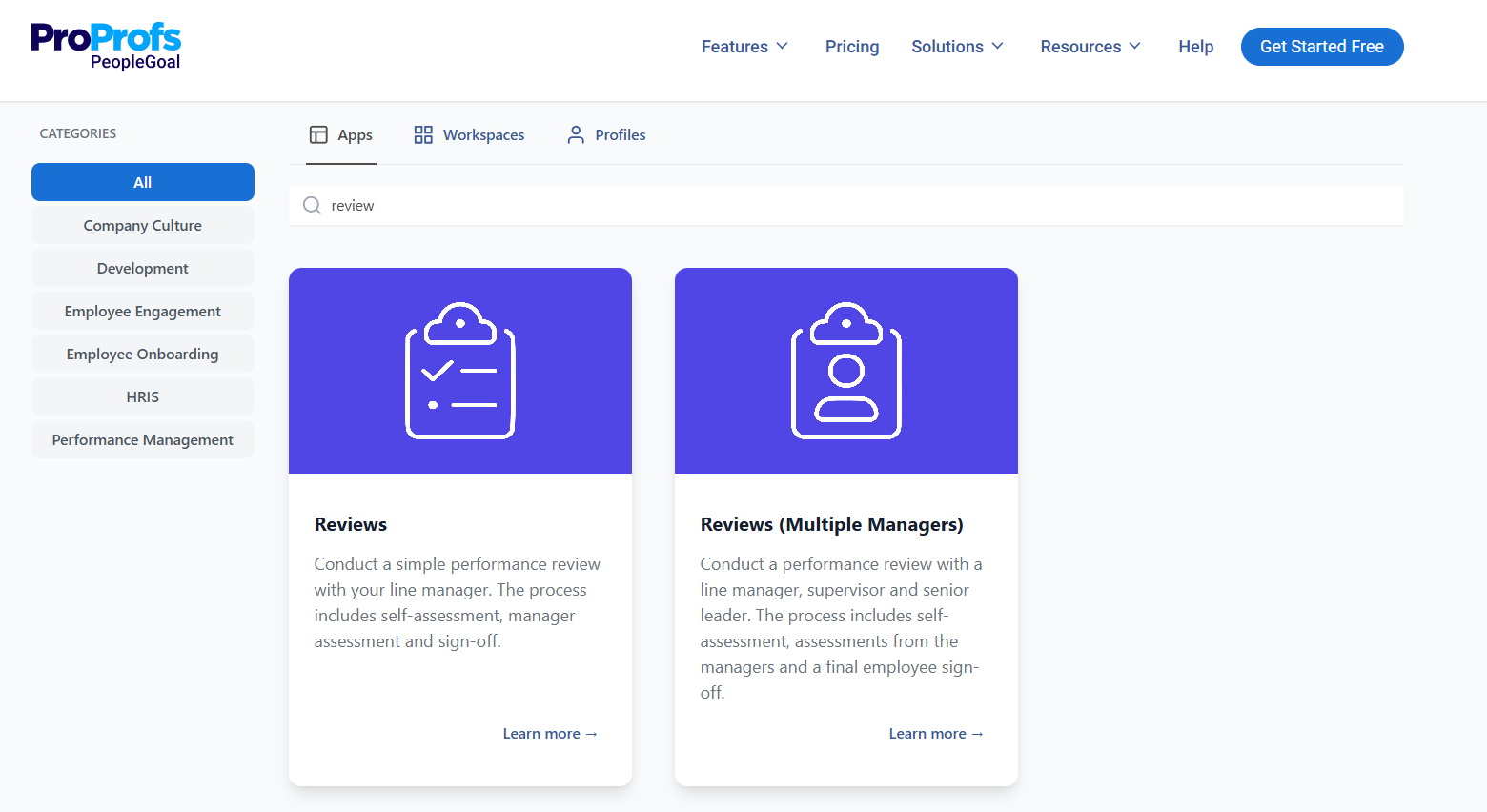
2. Customize the Review Template
- Go to “Template” then “Edit Template”.
- Define the review stages (e.g., self-assessment, line manager, supervisor, and senior leader).
- Add or edit form fields (text, options, numerical, calendar, etc.) using the element tools.
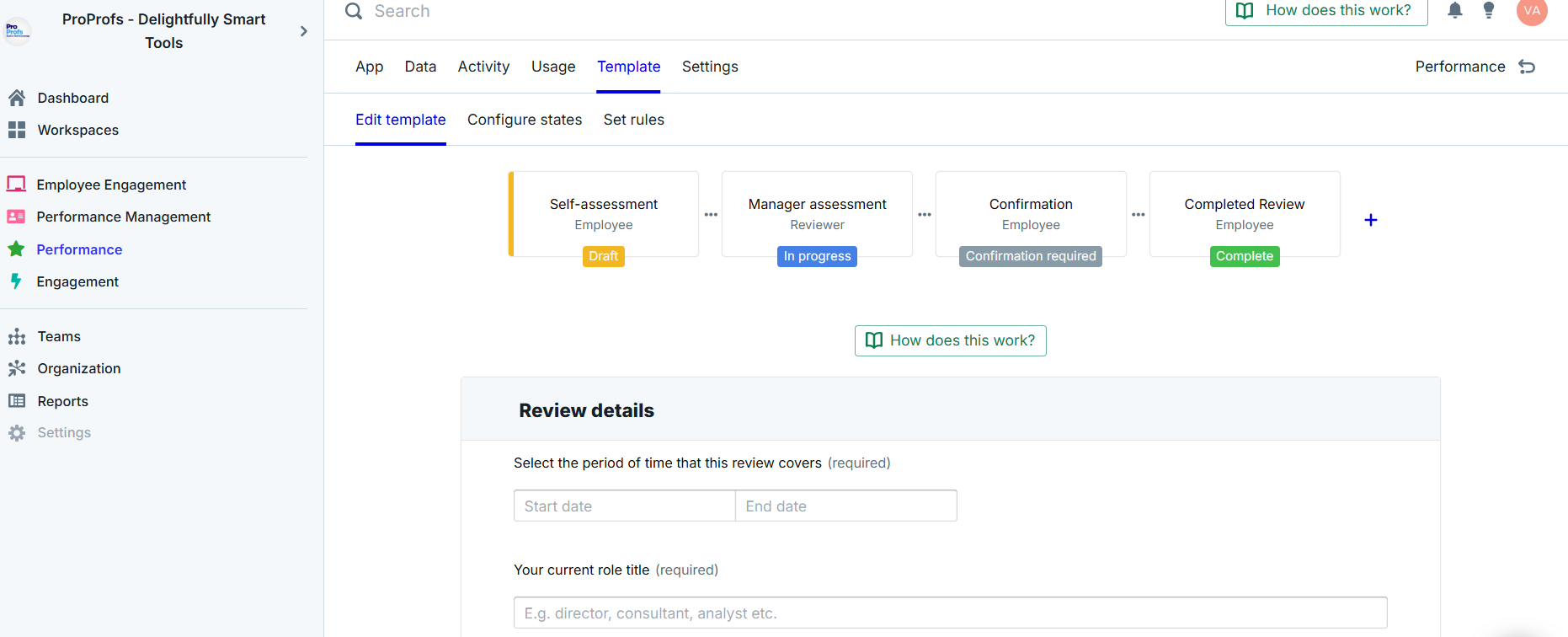
3. Configure Permissions
- Click “Settings” then “Permissions”.
- Set who can access the app and who can view or provide feedback (e.g., limit feedback visibility or grant multi-manager input rights).
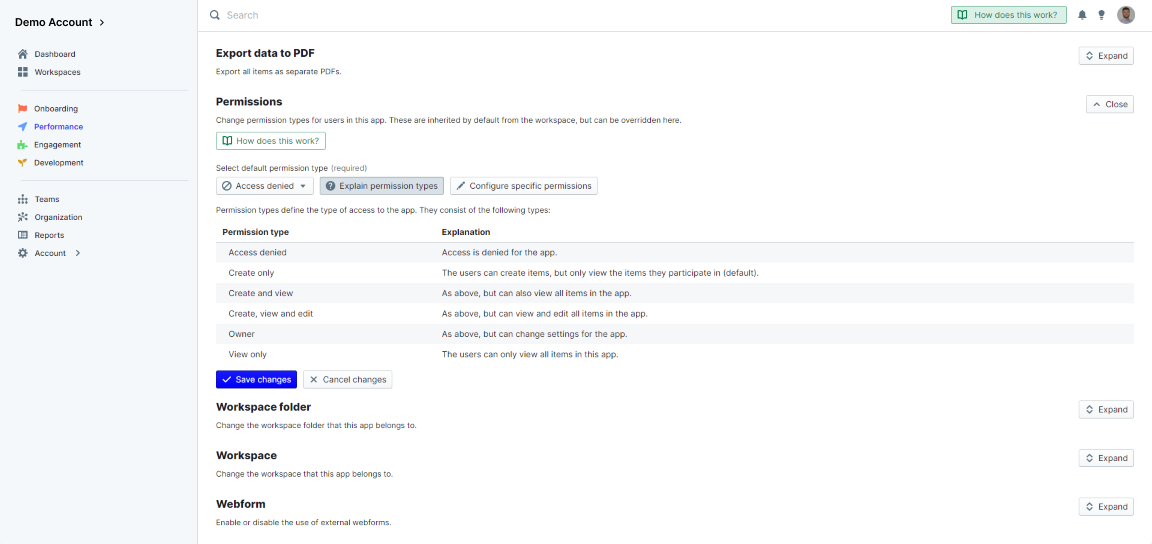
4. Launch a Review
- Go back to the App Home.
- Click “New Review”, then select the user(s) or team(s) to start the process.
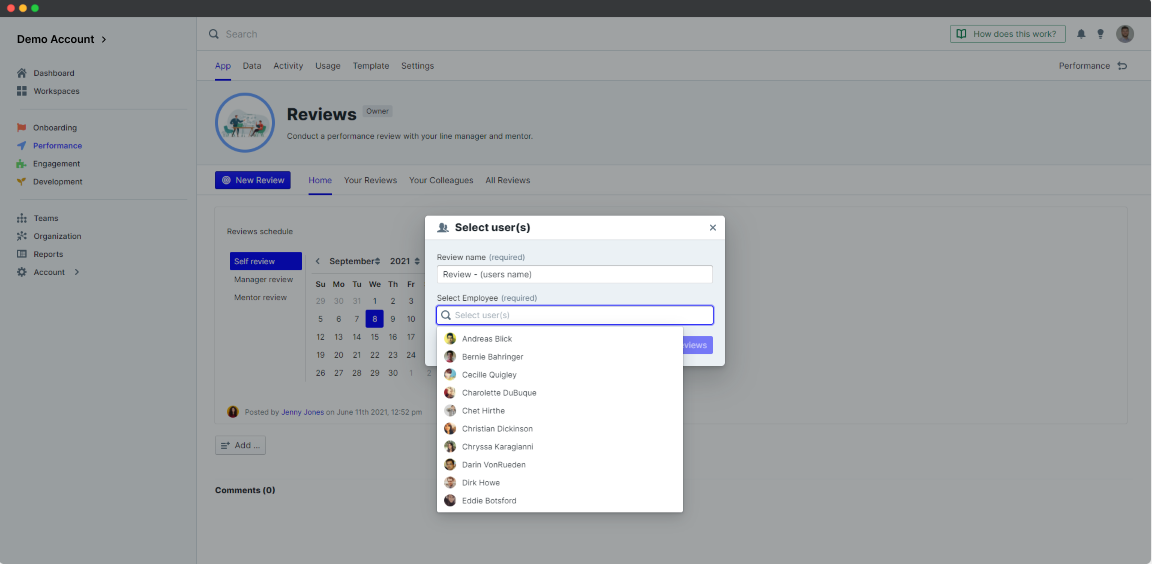
5. Automate Recurring Reviews
- Click “Add” then “Schedule” to automate the process.
- Use the employee start date as a trigger (e.g., 180 days after joining).
Set it to recur every 6 months if needed and enable auto-generation of reviews.
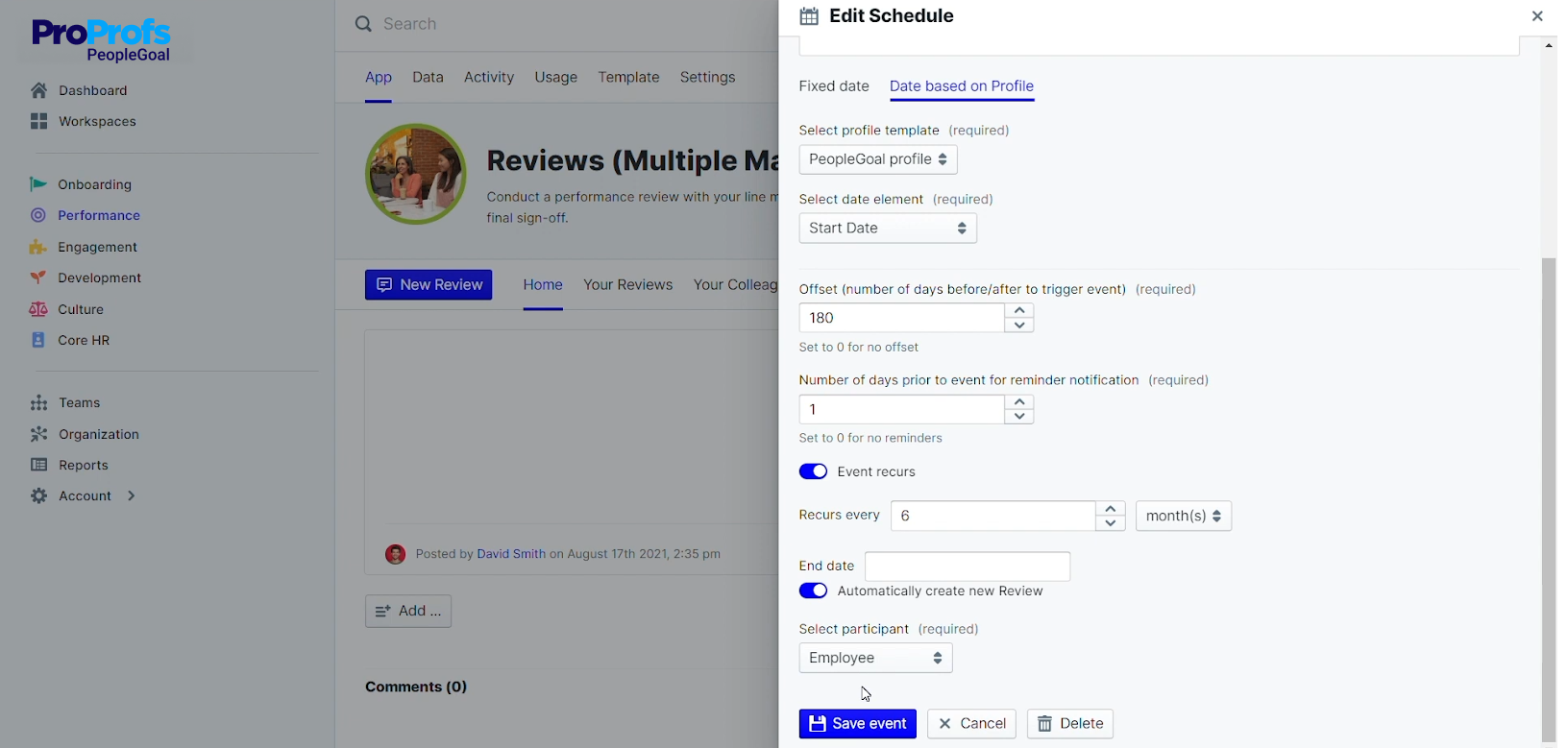
And don’t worry. We have recorded a video for you to understand this better.
Examples & Phrases for Performance Reviews
Using the right language during a performance review is essential.
Phrases should be constructive, specific, and motivating. They should focus on both strengths and areas for improvement.
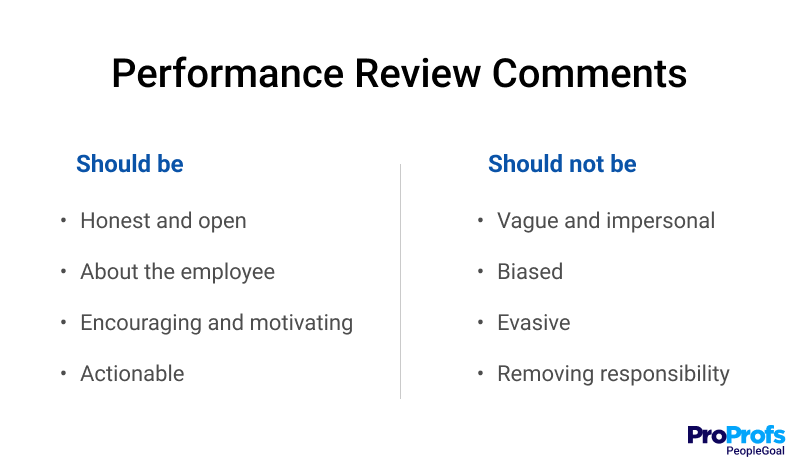
Employee Performance Review Examples
- “You consistently exceed sales targets, demonstrating exceptional dedication and commitment.”
- “Your leadership skills are evident in the way you mentor new team members and foster collaboration.”
Examples of Constructive Feedback Phrases
- “You could benefit from improving time management to meet deadlines more consistently.”
- “You’ve shown great potential in [area], but further development in [specific skill] will be needed to advance.”
What Are Some Performance Review Templates?
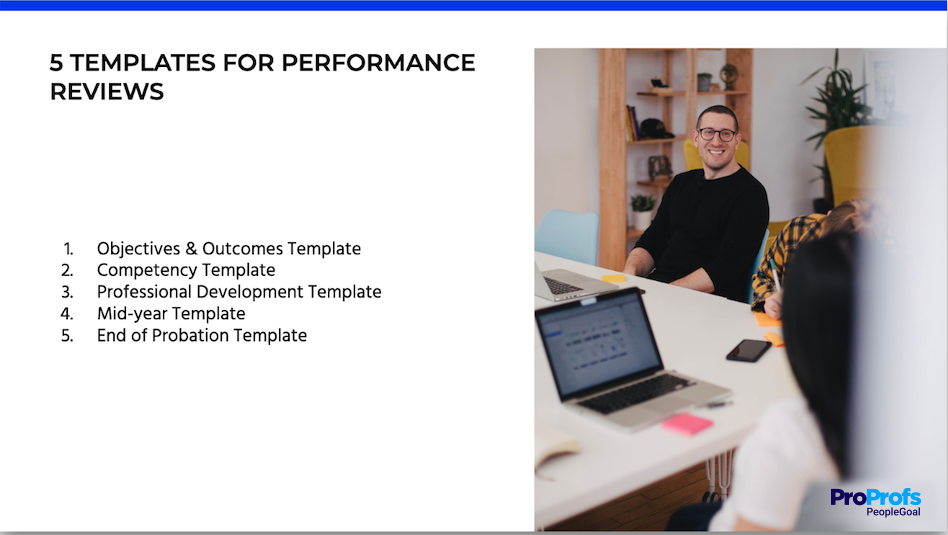
Employee performance review templates provide a structured framework, ensuring consistency, fairness, and comprehensive coverage of key performance areas, which streamlines the review process for managers and HR.
Here are some templates that will help you streamline the review process, helping achieve objective assessments and focused development.
1. Objectives & Outcomes Template for Performance Review
2. Competency Template for Performance Review
3. Professional Development Template for Performance Review
4. Mid-Year Template for Performance Review
5. End of Probation Template for Performance Review
What Are the Pros & Cons of Continuous Performance Reviews?
While traditional annual reviews have been the norm for many organizations, continuous performance reviews are quickly becoming a more popular choice.
They allow for ongoing feedback that can foster real-time improvements and greater employee engagement.
Pros:
- Timely Feedback: Employees can immediately address issues and make improvements.
- Higher Engagement: Ongoing feedback keeps employees involved in their own growth.
- Better Alignment: Ensures that employees stay on track with company goals throughout the year.
Cons:
- Time-Consuming: Requires regular check-ins, which can be time-consuming for managers.
- Overload: Too many reviews or too much feedback might overwhelm employees.
Pro Tip:
If implementing continuous reviews, consider using performance management software to streamline the process and avoid administrative overload.
How to Overcome Common Performance Review Challenges
Performance reviews have their own challenges, such as performance review bias, lack of clarity, or disengagement.
However, by following a few key strategies, you can overcome these hurdles and make performance reviews more effective for everyone involved.
Challenges & Solutions:
- Bias: Use data-driven metrics to ensure fair assessments.
- Lack of Engagement: Foster a culture of continuous feedback so that performance reviews are part of an ongoing conversation.
- Lack of Clarity: Provide specific examples and actionable advice for improvement.
Pro Tip:
Conduct regular calibration sessions with managers to ensure consistency in the way performance is evaluated across teams.
Make Performance Reviews Work for Your Organization
Employee performance reviews play a crucial role in improving employee engagement, satisfaction, and productivity. By following best practices, choosing the right type of review, and providing actionable feedback, you can create a performance review process that drives success for both your employees and your organization.
Regular performance reviews, whether annual or continuous, are key to aligning employee performance with company goals and fostering an environment of continuous improvement.
PeopleGoal streamlines performance reviews by offering customizable templates, real-time feedback, and goal tracking. It makes it easy to manage reviews and enhance employee development.
Ready to 3x Your Teams' Performance?
Use the best performance management software to align goals, track progress, and boost employee engagement.

